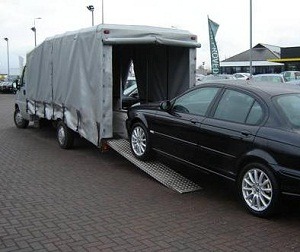 Proper precautions must be considered when shipping a big ticket item such as a car. It is your responsibility to prepare the car before the shipping company takes over. Here are some things to consider when shipping a car.
Proper precautions must be considered when shipping a big ticket item such as a car. It is your responsibility to prepare the car before the shipping company takes over. Here are some things to consider when shipping a car.
Inspect your car and look for scratches, bumps and other damages. Take note of these damages for documentation. You can also take pictures. You can use these information when you, or the receiver, inspect the vehicle upon arrival to the destination before signing the bill of lading. Because you have proof, processing of claims will be much easier in case damages are incurred during transport.
Remove all custom and after market products on your car like stereos, video and DVD player systems, GPS Systems and detachable CD players. These items will not be covered by an automotive transporter’s insurance. You may opt to ship these items separately.
All personal items from the interior of your car, such as the trunk and glove compartment must also be removed. You will not save on shipping costs by placing other belongings inside the car. Vehicle transporters are not licensed to transfer goods and you could be held liable if found that you tried to sneak in other stuff in the car.
Perform a maintenance check before shipping your car to ensure that it is in best working condition. Mechanical problems can cause delays and could worsen during transport.
Ensure the battery has a full charge and the tires are properly inflated. Top off all of the fluids, but the gas tank should only be a quarter or eighth full to save weight and keep your shipment moving quickly.
To be safe, take pictures of all parts of the car, both inside and out. Each photograph should have a date on it and should note what the image is.
Temperature and elevation changes throughout the transport process can build pressure inside the car.
Leave your windows open slightly to relieve the pressure and prevent the your car’s windows from blowing out.
Disable your car’s alarm or provide detailed, written instructions for the driver on how to turn off the alarm in case it is triggered.
